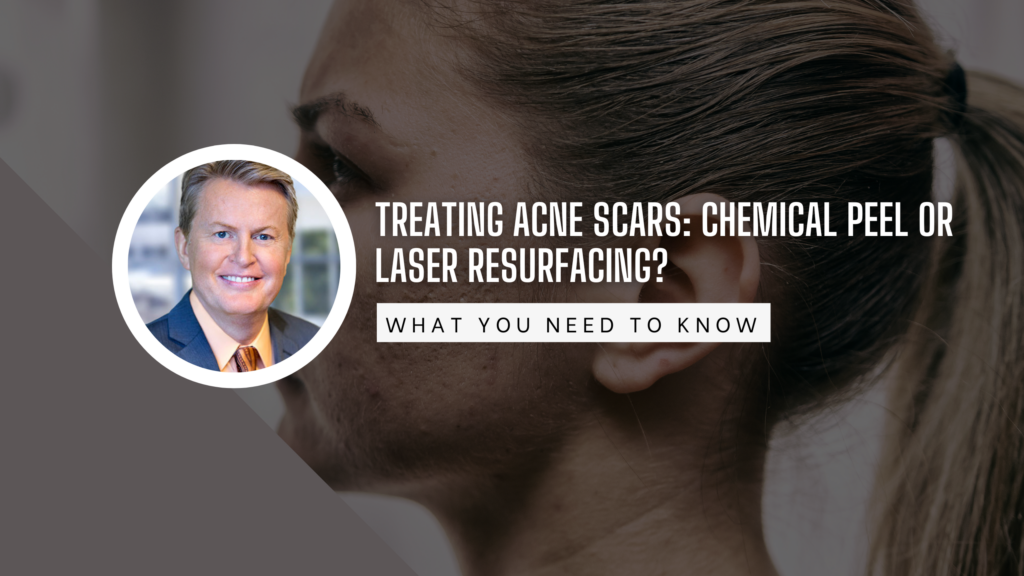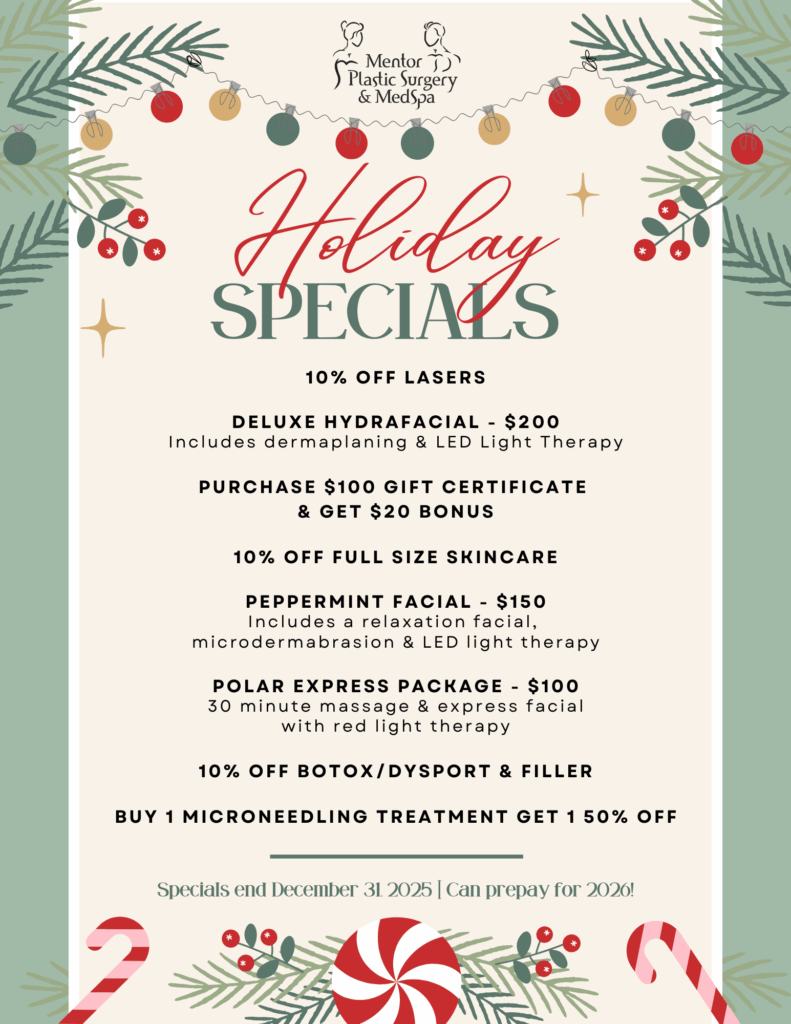The question “Which procedure is most suitable for me?” often comes up in discussions about facial treatments for different skin conditions. Here are commonly suggested procedures for addressing these cosmetic issues.
include laser skin resurfacing, microdermabrasion, or a chemical peel. The majority of patients avoid invasive plastic surgery, choosing non-invasive cosmetic therapies for facial rejuvenation. Dr. Vanek will help you decide which treatment to choose based on your skin tone, the amount of downtime you prefer, your skin type, and your level of involvement.
The following treatments exfoliate (peel) layers of skin:
- chemical peels
- microdermabrasion
- laser skin treatments
The above treatments improve acne scars, blemishes, wrinkles, skin tone, and texture. There are many different types of laser treatments and chemical peels. Which is best for you?
With his expertise in minimally invasive cosmetic procedures, Dr. Paul Vanek is uniquely positioned to guide you during your consultation. He will examine your skin type, discuss your concerns, and then facilitate a custom treatment protocol. You will receive the best skin care to address acne scars, fine lines, pigmentation, or discoloration.
By combining the right skin care regimen with either chemical peels or laser skin resurfacing, you can look forward to achieving clear, rejuvenated, and younger-looking skin.
Which is better, a chemical peel or a laser?
Over time, the chemical peel has proven reliable in improving a patient’s overall skin tone and texture. With a chemical peel, you can effectively remove fine lines, discoloration, hyperpigmentation, and sun damage, reducing wrinkles and minor blemishes. A chemical peel is one option for enhancing skin tone and texture. Skin tone is essential for the strength and type of chemical peel Dr. Vanek will recommend. For example, light skin tones tolerate deep chemical peels.
By comparison, people who have dark skin tones, such as African Americans, Asians, or Hispanics, should have milder chemical peels.
Light chemical peels use glycolic, citric, or lactic acids, known as alpha hydroxy acids, to exfoliate the top and outermost layers of the skin. A popular acne treatment uses beta hydroxy acids, called salicylic acid, to decrease oil production and unclog pores. Medium-strength chemical peels address deep wrinkles and fine lines.
Deep chemical peels use trichloroacetic acid concentrations or phenol. However, laser resurfacing has become the norm for treating deep wrinkles, acne scars, and fine lines.
Are laser treatments better than chemical peels?
A series of chemical peels is often necessary for the best cosmetic results. While they may take longer to effect similar changes in the skin as laser treatments, it’s important to remember that patience is key.
Overall, chemical peels are usually less expensive, making them a more cost-effective option for many. According to the American Society of Plastic Surgeons, the national average cost of chemical peels is $700. In contrast, laser treatments can range from $800 to $3,000 for a single session.
What about Microdermabrasion?
During microdermabrasion, the practitioner uses a handheld device to pass the crystals over the skin and then vacuums them away along with the dead skin. Microdermabrasion improves the skin’s overall look, feel, and tone. Nevertheless, it is not as successful in treating major skin conditions such as acne scarring, deep wrinkles, or hyperpigmentation. Microdermabrasion has no recovery time or discomfort.
Laser skin resurfacing
Laser skin treatments are similar to chemical peels in that they can treat similar symptoms. However, one area in which laser treatments are superior to microdermabrasion and chemical peels is their controllability. Doctors can precisely administer laser treatments, making them highly targeted.
When Dr. Vanek uses a laser to treat acne scars, he can target the scar tissue and leave the healthy skin alone. A laser can stimulate new collagen production. While deeper chemical peels promote collagen production at the dermal layer, a laser is more targeted. It can produce more collagen with faster results.
For acne scarring, lasers such as the Fraxel laser, Picosure, and eMatrix are safe and effective options. The eMatrix laser, in particular, is a ‘color-blind laser,’ making it suitable for all skin tones without the risk of hyperpigmentation or scarring. Rest assured, Dr. Vanek will discuss these options to determine the best treatment for your acne scarring.
Ablative vs. non-ablative laser treatment
Ablative laser treatments remove the uppermost layer of the skin. Non-ablative laser treatments heat the underlying layer without damaging the uppermost layer. By heating the underlying layer, collagen stimulation is produced. Still, ablative lasers may be necessary for treating deep wrinkles or severely sun-damaged skin. Dr. Vanek will help assess your skin type, texture, and concerns to determine the best treatment for you.
Is it possible to combine chemical peels and laser treatments?
Some individuals consider chemical peels, microdermabrasion, and laser treatments as various parts of an overall treatment option to achieve optimal results. When done a few weeks before laser resurfacing treatment can produce better results. Alternatively, microdermabrasion and superficial peels, even at-home peels, also work well together. Finding the best combination of treatments is one key to a successful cosmetic outcome that Dr. Vanek will help facilitate.
Side effects of chemical peels & laser treatments
Regarding recovery time, superficial light chemical peels may take one to two days of peeling after the procedure. There is no recovery time after some laser treatments. Microdermabrasion has no downtime and can be done during your lunch break. Medium-strength chemical peels can lead to one week or more of peeling, redness, and downtime.
Non-ablative laser treatments, such as those used to treat facial redness, require no downtime. eMatrix or Fraxel usually requires 48 hours of downtime to treat wrinkles or acne scars. After chemical peels or laser treatments, it is necessary to avoid sun exposure strictly, as new, healthy skin is produced.
Can you do laser treatment after a chemical peel?
Yes, many patients have laser treatments after a chemical peel. Depending on the chemical peel’s strength, type, and skin issues, the peel can “pre-treat” the skin and prepare it for the laser. There are ablative and non-ablative lasers currently used in dermatology. Non-ablative lasers such as V-Beam and Fraxel often perform or alternate with chemical peel treatments. During a chemical peel, the procedure exfoliates dead skin while stimulating the growth of new and healthy skin. Similarly, laser treatments treat and remove fine lines, brown spots, age, and sun spots while encouraging healthy skin cells and forming new collagen. Combining different methods can achieve the best cosmetic results and stimulate collagen production for healthy, beautiful skin.
Which chemical, peel or laser, is better for acne scars?
Dr. Paul Vanek is an expert in treating acne scars in his Mentor office. He has achieved optimal results by using a combination of the treatments described. Dr. Vanek will guide you to the best treatment combination to remove acne scars and improve skin.
How do I decide between laser treatment and a chemical peel?
Consulting with Dr. Vanek will help you decide on the best treatment options. Whether you want to treat discoloration, acne scarring, or sun damage, the best thing to do is schedule a consultation with board-certified Northeastern Ohio plastic surgeon Dr. Paul Vanek. For more information, please get in touch with Dr. Vanek’s office to discuss your options. You can make an appointment online or call (440) 205-5750 today.





